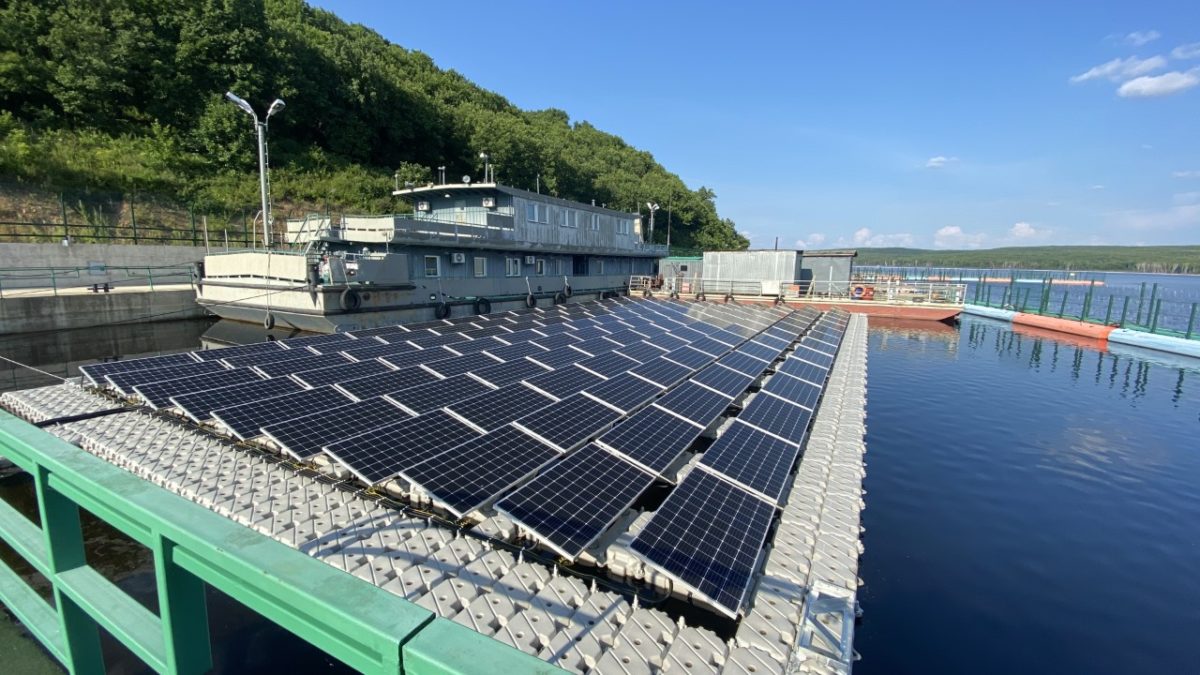Russian hydropower producer Rushydro and solar manufacturer Hevel have completed construction on a floating solar power plant at the site of the company's 320 MW Nizhne-Bureyskaya hydropower plant in the Russian Far East's Amur region.
The facility was built with 140 heterojunction solar panels mounted on pontoon-type floats. Monocrystalline solar modules and eight transformerless 3-phase PV grid-connected inverters with an AC output power of 125000 VA were used in the project, a spokesperson from Hevel told pv magazine. “The PV plant covers an area of 474 square meters and consists of 10 rows of PV modules, 14 panels in each, mounted at 15 degree tilt angle.”
According to the Russian module maker, the floating generator is ensured by a special connection scheme of floating modules and is designed to withstand several meters in water level differential and waves. “The 52.5 kW floating PV plant generates electricity for the hydro power plant’s demands,” the spokesperson added. “The plant has its own automatic inverter with an 115.2 kWh storage system that allows it to work in stand-alone mode.”
Hevel also claims that the project's special design of buoyant pontoons reduces construction time and increases its mobility. The PV plant can be dismantled quickly and transported to any part of the reservoir, it further explained.
The floating facility covers a significant amount of the hydro power plant’s electricity demand that helps to increase the net electricity supply into the grid and improve the efficiency of the hydropower supply.
Rushydro announced a plan to expand the use of solar energy across its service territory in June 2017. At the time, the company said it wanted to deploy off-grid medium-sized PV plants across remote areas of Yacutia, a region in Russia’s Far Eastern Federal District. The company’s PJSC RAO ES East unit, which operates in isolated areas of the Russian Far East, is also targeting the installation of 146 MW of renewable energy generation capacity.
At that time, Hevel Solar also announced that it intended to build off-grid solar plants in the Russian Far East, the country’s easternmost region with limited access to electricity and transmission networks. The region, which is the largest and the least populated district of Russia, has the poorest energy and transport infrastructure in the country. In order to improve its infrastructure, the Russian government is seeking to attract investors primarily from the countries of the Asia-Pacific region.
*Article was amended to reflect that the PV plant has an installed power of 52 kW and not 1.2 MW as previously reported.
This content is protected by copyright and may not be reused. If you want to cooperate with us and would like to reuse some of our content, please contact: editors@pv-magazine.com.




Why is a capacity of 1.2 MW mentioned in the first a paragraph?
The article says 52.5 kW later and, seeing the picture and reading “140 modules”, I guess it is closer to reality.
Hi Stanislas,
thanks for spotting the mistake, article was amended. It is a 52 kW project.